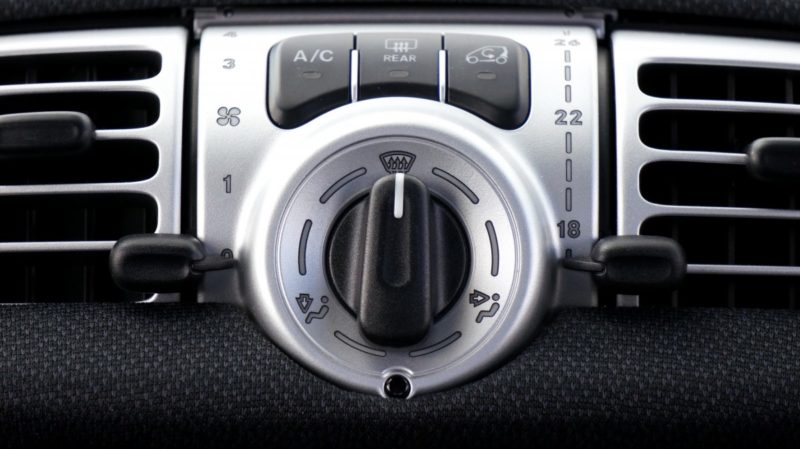Are you wondering how car air conditioner work? Well, do not go anywhere. Instead, this article will be answering that question. It works by the heat exchange mechanism done by the refrigerant found in the air conditioner itself, the air cycles back and forth, which produces colder air inside the car. The same as the typical air conditioners found at your home. That’s it. I know you are ready. Get in your horses and read the article.

Steps On How Car Air Conditioner Work
You might be thinking, “how car air conditioner work?” I know you are very curious about that. Typically, the car air conditioning unit works by the heat exchange mechanism brought by the refrigerant as it absorbs warm air and blows out cold air inside.
A refrigerant is the precursor of your air conditioning process. It has a low boiling point and serves as the mediator in the heat exchange process in your car. There are seven steps that the air is made cooler for the interior of your car. Here are they.
Step #1. Compressing things up
When you turned on your car, the compressor will also go running. This part of the cooling unit compresses the refrigerant and pressurizes it. As the refrigerant is pressurized, it transforms into a liquid that is further used by the interconnected coils of the air conditioning unit of your car.
The compressor is a significant part of the air conditioning unit of your car. This tool will pressurize the refrigerant into its liquid form. The liquid refrigerant will be the blood of the cooling unit. It effectively exchanges heat in its surroundings.
Step #2. Refrigerant is on the move
The refrigerant will then be moving into the coils that are located in the condenser. In this step, the air from outside interacts with the liquid, pressurized refrigerant in the coils. Since the condenser has a high-temperature fluid, there will be a temperature gradient between the condenser and air from outside. The heat from the high-temperature fluid will then be transferred to the atmosphere and mix with the surrounding air.
Step #3. The receiver drier
In this step, the refrigerant comes into the receiver drier, also known as an accumulator. This drier is for the maintenance of the air cooling unit in the car. It specifically transforms residual fluids into gasses to send them to the compressor.
There will be a desiccant or moisture absorber in the receiver drier. This tool will remove the remaining moisture from both the air and the refrigerant. It will cool down the refrigerant and makes the cooling system continue to work.
Step #4. The expansion valve
The existing refrigerant, in its chilled fluid form, will be moving into the expansion valve. This expansion valve or orifice tube controls the expansion of the refrigerant. It also reduces the available pressure before the refrigerant comes into the evaporator. Overall, this process will be reducing the fluid pressure and allows the refrigerant to move to the evaporator.
Step #5. The evaporator
In this step, the refrigerant is transferred to the evaporator. In this step, the car will be pulling air into the evaporator to its core. With this, the refrigerant will be colder and convert the extracted heat into the cold air for the car’s interior. The evaporator itself is the one that takes heat from the car that transforms it into a liquid refrigerant. This part can be seen behind the vents of your cooling unit in the car.
Step #6. The highlight
After the evaporator step, the fans placed in the vents will then be pushing cold air into the car’s interior. This process will make the car colder and achieves the air conditioning that it is desired. As the air conditioning process occurs, moisture and humidity from the inside of the car are removed.
With this, the passengers can enjoy relaxing and dry air inside the car. When the moisture inside the vehicle is removed, it is transformed into water. This water will then be dripping into its designated place under the car. You can observe the car has water droplets when parked or the air conditioning is turned on.
When the air conditioner is already working and blowing cold air, the refrigerant inside the coils will increase temperature. Thus, the refrigerant will then be brought back to its old state as a gas.
Step #7. The cycle goes on
After the air conditioner had blown cold air into the car’s insides, the refrigerant will return to its original state. This refrigerant, recirculated back into the compressor, repeating the process of cooling. Through this, the air conditioner will blow new colder air at the vents of your car quickly.
Conclusion
Very good! You already know how car air conditioner work. The cooling unit cycles the gaseous refrigerant into its liquid form, then blows cold air into the car. Air conditioning is a tedious process. This process involves heat exchange from the air in the surroundings and refrigerant inside the coils of AC. You can go here if you need to read more articles. Thank you very much for reading! Stay safe!
